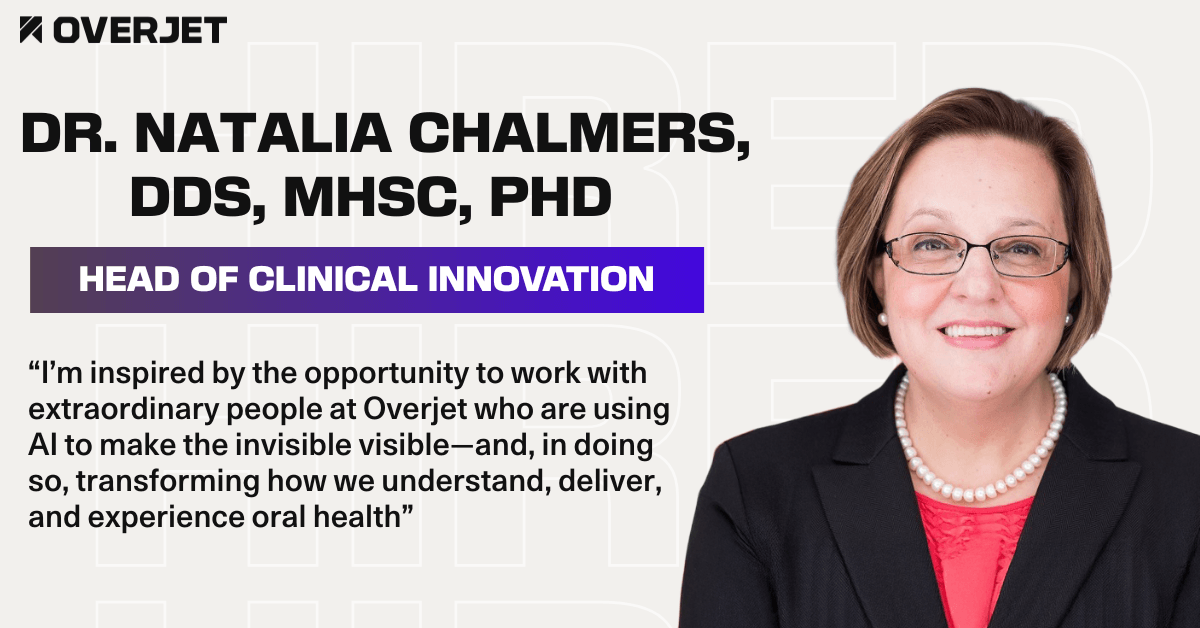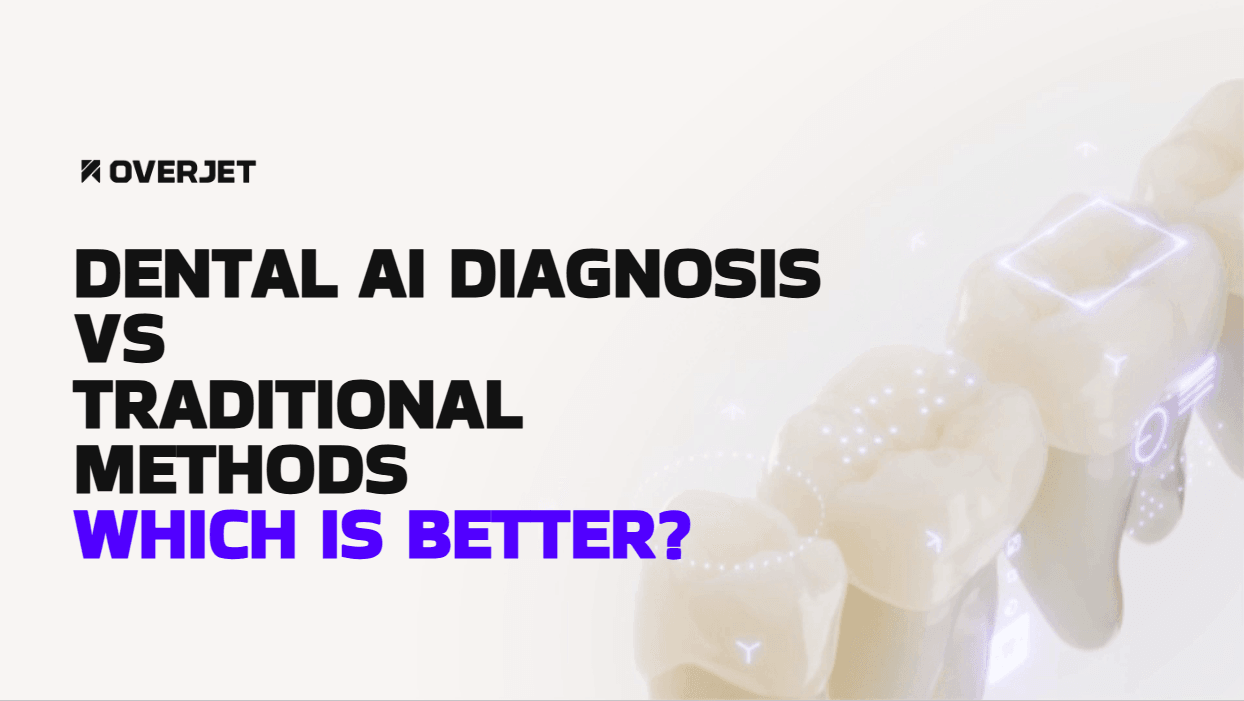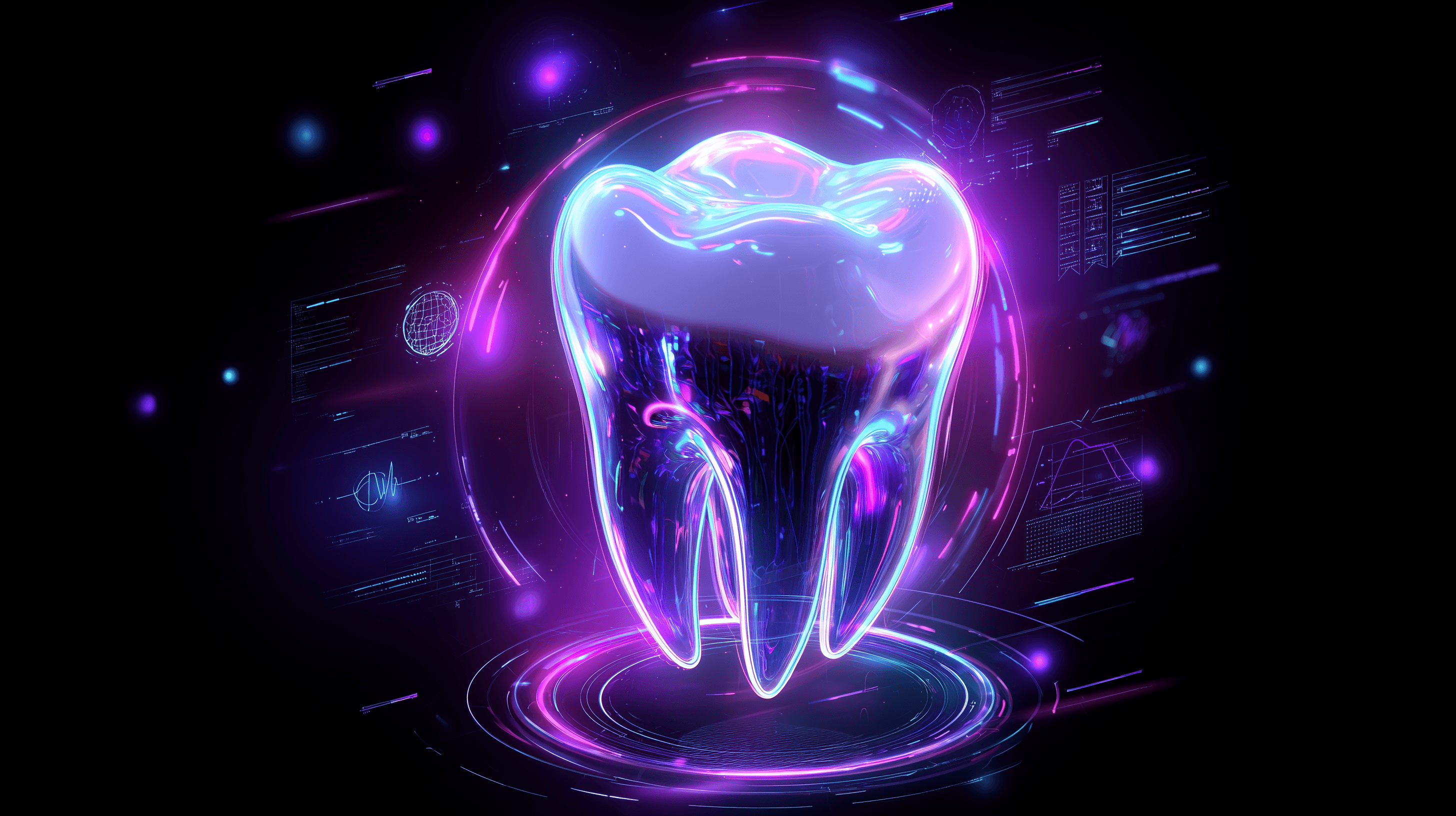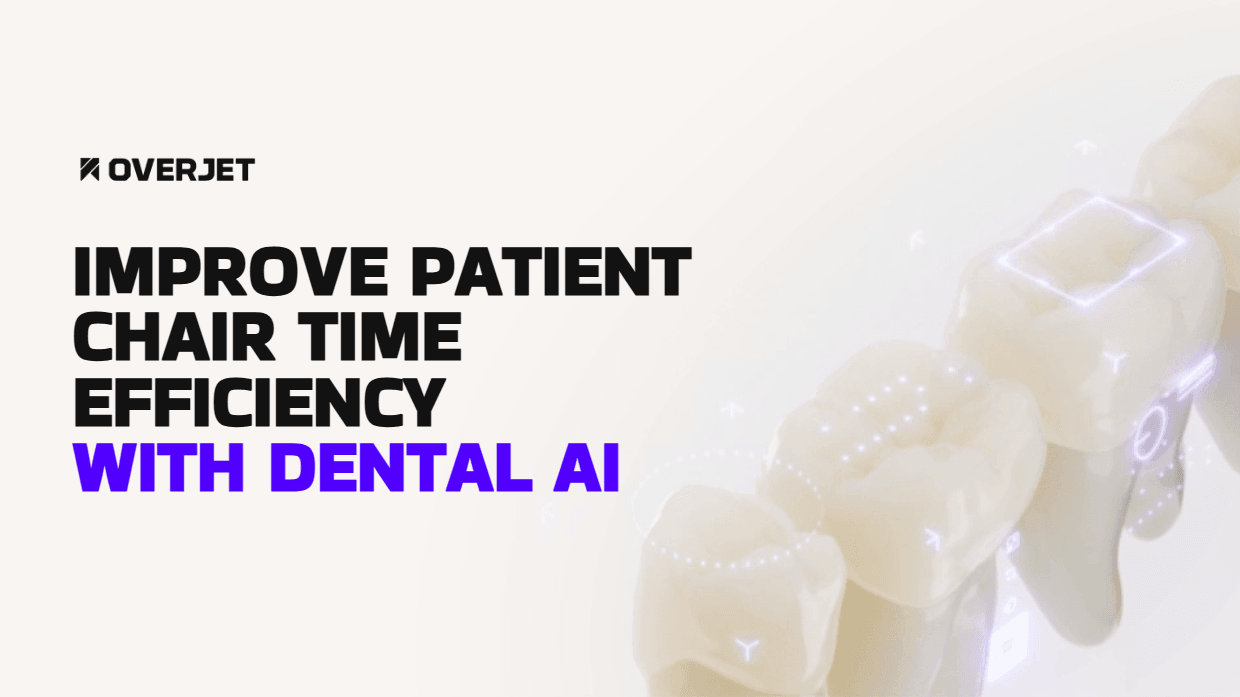The Cost of Missed Diagnoses in Dentistry
Missed or delayed dental diagnoses can lead to serious consequences, for both patients and providers. Conditions like early caries, bone loss, and periapical pathology are often subtle and can be easily overlooked, especially in busy clinical settings.
What happens when diagnoses are missed?
For patients:
Delayed treatment can result in disease progression and more invasive procedures later.
Undetected conditions may cause pain, tooth loss, or systemic health issues.
Patients may lose trust, seek second opinions, or leave negative reviews.
For providers:
Missed diagnoses can expose the practice to legal risk or board complaints.
Inconsistent care may harm the practice’s reputation and patient retention.
Lower case acceptance due to lack of visual evidence or patient understanding.
For group practices and DSOs:
Diagnostic variability across providers leads to inconsistent care.
Missed treatment opportunities impact revenue and operational efficiency.
Lack of standardization makes it difficult to scale high-quality care.
Why diagnostic precision matters more than ever
Today’s dental practices are under pressure to deliver accurate, consistent care at scale. That’s where artificial intelligence (AI) comes in.
Solutions like Overjet, one of the industry’s leading FDA-cleared dental AI platform, provide real-time radiograph analysis and visual insights that:
Help detect conditions earlier
Promote diagnostic consistency across providers
Support more confident clinical decisions
With Overjet, dentists can catch what others might miss, ensuring no opportunity for treatment or better care is overlooked.
Explore Overjet's Dental AI Software
Understanding Diagnostic Errors in Dentistry
Accurate diagnosis is the foundation of quality dental care, yet diagnostic errors remain a common and costly challenge in clinical practice. Missed or delayed diagnoses can lead to unnecessary patient discomfort, preventable disease progression, and lost trust in providers.
Common causes of missed diagnoses:
Human error and variability
Dental radiographs can be interpreted differently by different clinicians, especially when findings are subtle. What one provider sees as early-stage caries, another might miss entirely. This variability is amplified in group settings, where patients may see multiple providers over time.
Time constraints and patient volume
Many dental practices operate under intense time pressure, juggling packed schedules and quick patient turnover. This can limit the time available for detailed radiograph evaluation, increasing the likelihood that early signs of disease are overlooked.
Limitations in radiographic interpretation
Even skilled clinicians can struggle to detect small lesions or early bone changes on radiographs. Factors like image quality, lighting, and clinician fatigue all play a role in the diagnostic process.
The clinical impact
When issues like caries or periodontal bone loss go undetected, they can progress into more serious problems. Untreated decay may require root canal therapy or extraction. Bone loss can lead to tooth mobility and ultimately, tooth loss. These outcomes not only harm patients but also affect their confidence in care.
What the research shows
Studies consistently highlight diagnostic variability. Research published in the Journal of Dental Research found up to 20% disagreement between clinicians when detecting caries. These inconsistencies demonstrate the need for tools, like dental AI, that standardize interpretation and support better clinical decisions across providers.
How Dental AI Enhances Diagnostic Accuracy
Accurate radiographic interpretation is critical to identifying dental conditions early and planning effective treatment. But human variability and limited time can lead to missed findings. This is where dental artificial intelligence (AI) plays a transformative role.
The role of AI in radiograph interpretation
Dental AI uses advanced deep learning algorithms to analyze X-rays and highlight potential areas of concern, such as:
Caries (tooth decay)
Periapical radiolucencies
These AI models are trained on thousands of expertly annotated images, allowing them to detect patterns that may go unnoticed by the human eye, especially in early-stage disease.
FDA-cleared technology designed for clinical use
Overjet’s AI is FDA-cleared for both caries detection and bone level measurement. This means the technology has passed strict safety and efficacy standards and is clinically validated to provide reliable, actionable insights.
Real-world clinical applications
Caries detection: Overjet’s AI visually highlights enamel and dentin lesions, helping clinicians detect decay early, before it progresses into more complex problems.
Bone level quantification: Overjet provides precise millimeter measurements of bone levels on bitewings and periapical images, supporting accurate periodontal diagnosis and ongoing tracking.
AI as a second pair of eyes
Overjet doesn’t replace the dentist, it supports them. The AI runs in real time, providing immediate feedback and visual cues during patient exams. This “second set of eyes” helps providers feel more confident in their diagnoses and ensures consistency across the practice, leading to better patient outcomes and increased trust.
Benefits of AI for Preventing Missed Treatment Opportunities
Missed diagnoses don’t just delay care, they often lead to missed treatment opportunities that affect both patient health and practice revenue. Dental AI helps bridge this gap by making it easier to detect, explain, and act on clinical findings.
Here’s how Overjet’s AI supports better outcomes:
Boosts case acceptance with visual clarity
Many patients struggle to interpret traditional X-rays.
Overjet highlights caries and bone loss directly on the radiograph.
Patients can see the problem clearly, which builds trust and improves treatment acceptance.
Standardizes care across providers and locations
Ensures every provider uses the same diagnostic criteria, regardless of experience level or practice location.
Helps DSOs and group practices maintain consistency and quality of care.
Improves continuity even when patients see different providers.
Enables better long-term tracking
Tracks changes in bone levels or lesions over time using precise, measurable data.
Supports proactive, personalized care plans based on real-time trends.
Enhances documentation of disease progression and treatment effectiveness.
Speeds up confident clinical decisions
Surfaces critical findings instantly, reducing the time needed for image review.
Allows providers to focus more on treatment planning and patient communication.
Improves both accuracy and efficiency in busy clinical workflows.
With Overjet, dental professionals can detect more conditions, explain them more clearly to patients, and make faster, more informed decisions, turning missed opportunities into delivered care.
How Overjet Leads in AI-Powered Diagnostic Support
As dental AI becomes more widely adopted, not all solutions are created equal. Overjet stands out as the industry leader by combining advanced technology, clinical validation, and seamless integration to support better outcomes for patients and practices alike.
What sets Overjet apart?
FDA-cleared for both caries and bone loss detection
Overjet is the only dental AI platform with FDA clearance for both types of diagnosis, setting a high bar for safety and clinical accuracy.
This dual capability enables comprehensive radiograph review in one platform.
Seamless integration with your existing systems
Overjet works directly within your practice management software and imaging system.
No extra steps or platforms, clinicians receive AI insights exactly where and when they need them.
Patient-facing visuals that build trust
The AI highlights findings like cavities and bone loss with intuitive overlays.
Patients can see and understand their conditions in seconds, making it easier to accept treatment recommendations.
Proven at scale
Trusted by leading DSOs and dental groups across the country.
Millions of X-rays analyzed and thousands of providers supported, with results that drive efficiency and consistency.
Backed by clinical research
Overjet’s accuracy and impact are supported by peer-reviewed research. In one study, its caries detection AI demonstrated higher sensitivity than human clinicians, without increasing false positives. That means more reliable diagnoses without unnecessary treatment.
With Overjet, dental teams gain a powerful diagnostic ally that delivers results, improves communication, and raises the standard of care across every patient visit.
Practical Implementation, Using Overjet in Daily Practice
Adopting dental AI may seem like a big change, but Overjet makes it simple and seamless. From onboarding to daily use, the platform is designed to integrate smoothly into your existing workflows, enhancing care without adding complexity.
A smooth onboarding process
Overjet’s dedicated implementation team handles every step, from data integration to staff training.
Onboarding is tailored to your specific practice setup, ensuring minimal disruption and quick adoption.
Support continues beyond setup, with real-time assistance and ongoing updates as needed.
Seamless workflow integration
Overjet’s insights are delivered directly within your existing imaging and practice management systems.
No toggling between platforms, clinicians view AI findings where they already work.
This embedded approach saves time and ensures AI fits naturally into the diagnostic process.
Engaging providers through training and support
Overjet offers customized training sessions, including lunch-and-learns, webinars, and guided radiograph reviews.
Clinicians learn how to interpret AI findings, explain them to patients, and use them to enhance diagnosis and treatment planning.
Continuous education ensures users stay confident and updated as the technology evolves.
Driving practice-wide adoption
Practices that involve clinical leadership early tend to see faster and more effective adoption.
Overjet supports team alignment by offering tools and messaging that resonate with both providers and administrative staff.
Everyone, from the front desk to the operatory, understands how AI supports better care.
By making implementation simple and intuitive, Overjet helps practices unlock the full potential of dental AI, right from day one.
The Future of Diagnostic Excellence with AI
While dental AI has already made a significant impact on diagnostics, its potential extends far beyond identifying caries and bone loss. The future of dentistry is being shaped by intelligent systems that support every stage of clinical care, improving outcomes, streamlining operations, and increasing access to high-quality dentistry.
Expanding beyond diagnostics
AI is evolving from a diagnostic assistant into a comprehensive clinical decision support tool.
Emerging applications include:
Treatment planning assistance
Automated chart audit preparation
Enhanced patient education through personalized visuals and insights
Real-time alerts for clinical inconsistencies or incomplete records
These innovations help dentists work more efficiently, confidently, and consistently across every patient interaction.
Unlocking predictive analytics and population health insights
By analyzing anonymized and aggregated radiographic and clinical data, AI can help practices:
Identify trends across large patient populations
Stratify risk for conditions like periodontal disease
Plan preventive interventions and personalized outreach
Benchmark performance across providers and locations
For DSOs and group practices, this data-driven approach supports both clinical excellence and scalable operational growth.
Advancing equity and access to care
AI-powered tools reduce variability in diagnosis by offering standardized support across all providers, regardless of experience level. This is especially valuable in underserved areas, where access to seasoned clinicians may be limited. With AI, newer dentists can match the diagnostic accuracy of their more experienced peers, ensuring consistent, high-quality care for all patients.
As AI continues to evolve, it promises a future where precision, efficiency, and equity define the standard of care in dentistry.
Don’t Miss What Matters — Trust Overjet AI
Missed dental diagnoses can have serious consequences, not just for treatment outcomes, but for patient trust, provider confidence, and practice performance. Overjet’s dental AI helps eliminate these risks by delivering real-time, evidence-based insights that enhance care quality and consistency.
Why diagnostic accuracy matters:
Missed or delayed diagnoses can lead to disease progression, unnecessary pain, and more invasive treatments.
Patients may lose trust, decline treatment, or seek second opinions, hurting both relationships and revenue.
Inconsistent diagnostics across providers create gaps in care, especially in group practices and DSOs.
How Overjet helps solve the problem:
Delivers FDA-cleared AI for caries detection and bone level measurement, supporting accurate, confident decisions.
Integrates directly into your practice’s imaging and EHR systems, no extra steps or disruption to workflow.
Uses visual overlays to clearly highlight findings, helping patients understand their diagnosis and accept treatment.
Standardizes care across providers, ensuring every diagnosis meets the same high standard.
The Overjet advantage:
Trusted by leading DSOs and dental groups nationwide
Proven across millions of radiographs and thousands of providers
Backed by peer-reviewed research and real-world success
Whether you're running a solo practice or managing multiple locations, Overjet helps ensure nothing gets missed, because every diagnosis matters.
Ready to See Overjet's Dental Ai in Action?
Frequently Asked Questions (FAQs) - Avoid Missed Dental Diagnoses & Treatments
How does dental AI help prevent missed diagnoses?
Dental AI analyzes radiographs using machine learning algorithms to identify conditions like caries and bone loss. It acts as a second set of eyes, helping providers detect early-stage issues that might be overlooked in a busy clinical setting.
Is Overjet’s AI approved for clinical use?
Yes, Overjet’s AI is FDA-cleared for both caries detection and bone level measurement. This means it meets strict safety and accuracy standards, making it a trusted tool for clinical decision support.
Will AI replace dentists?
No. AI is designed to support, not replace, dental professionals. It enhances accuracy, streamlines workflows, and provides visual evidence, but final diagnoses and treatment decisions always remain in the hands of the clinician.
Can Overjet work with my existing dental software?
Overjet integrates seamlessly with many popular imaging systems and practice management platforms. It delivers insights directly within your existing workflow, so there’s no need to switch between tools.
How does AI improve case acceptance?
By providing clear visual overlays on X-rays, Overjet helps patients understand their condition better. When patients can see the problem, they’re more likely to trust the diagnosis and move forward with recommended treatment.
Is Overjet suitable for solo practices and DSOs?
Absolutely. Whether you're a single-location practice or part of a large DSO, Overjet scales to meet your needs and supports consistent, high-quality care across all providers.









